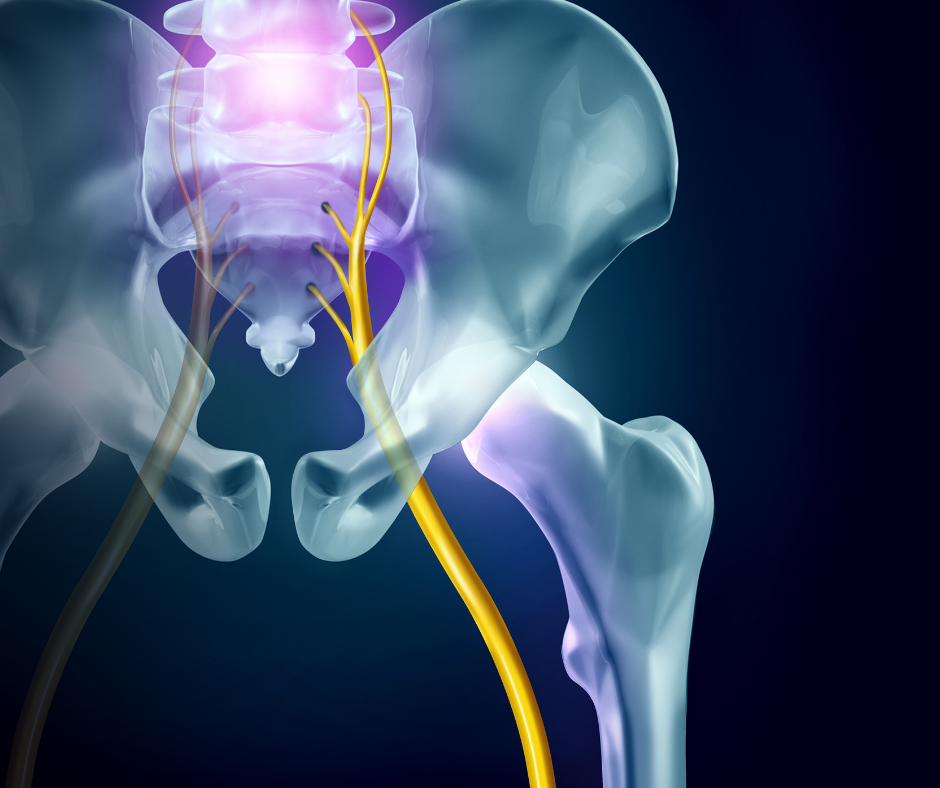What is the sciatic nerve?
The sciatic nerve is the largest nerve in the human body and is formed of 5 nerve roots from the lower spine. It passes deep in the glutes and down the back of the thigh all the way to sole of the foot. The sciatic nerve serves an imperative role in connecting the spinal cord with the skin and muscles of the thigh, leg, and foot.

Causes of sciatica
Anything that puts pressure on the sciatic nerve, or its roots can create the irritation referred to as sciatica. This pressure can come from a range of sources. For example, an intervertebral disc can herniate (bulge) and pinch the nerve, or a problem can arise in the sciatic notch.
Injuries like falling on your bum—can traumatize the nerve as it passes through the notch, causing it to swell. Pressure on the sciatic nerve from an overactive piriformis muscle is also a common reason for sciatic irritation.
Another frequent cause of sciatic pain is neural tension, where instead of gliding smoothly through the sheath that surrounds the nerve, a bit like a bicycle brake cable gliding through its casing, the sciatic nerve becomes restricted.
Whatever the cause, sciatica can be extremely uncomfortable, resulting in weakness, numbness, tingling, and burning, as well as moderate to extreme pain.
Body position and sciatica
Pilates can really help if you are suffering from sciatica, this first thing to think about is your neutral spine position, keeping the curves of your spine is important so you don’t add tension to what could be, an already restricted nerve. When you are standing or sitting think about being tall, keep your pelvis in its neutral position, tail bone pointing to the floor, shoulder blades relaxed, like they are melting down your back.
When you are sleeping if you are a side sleeper try placing a pillow under your top leg so you are not twisting your hips and pulling your spine out of neutral. Also think about your head position, make sure your pillow brings your neck to a neutral and doesn’t lift it higher than this position.

Pilates and sciatica
With nerve injuries, you want to be careful not to irritate the nerve more than it already is, and the same is true with sciatica. It is important to listen to your body and work at a level that is suitable for you, work on a pain scale and stop if it becomes too much.
If you have sciatica it is important to avoid over rotation of your trunk so exercises like spine twist and saw are no good.
The below Pilates exercises and stretches can help with sciatica.
Favorite



